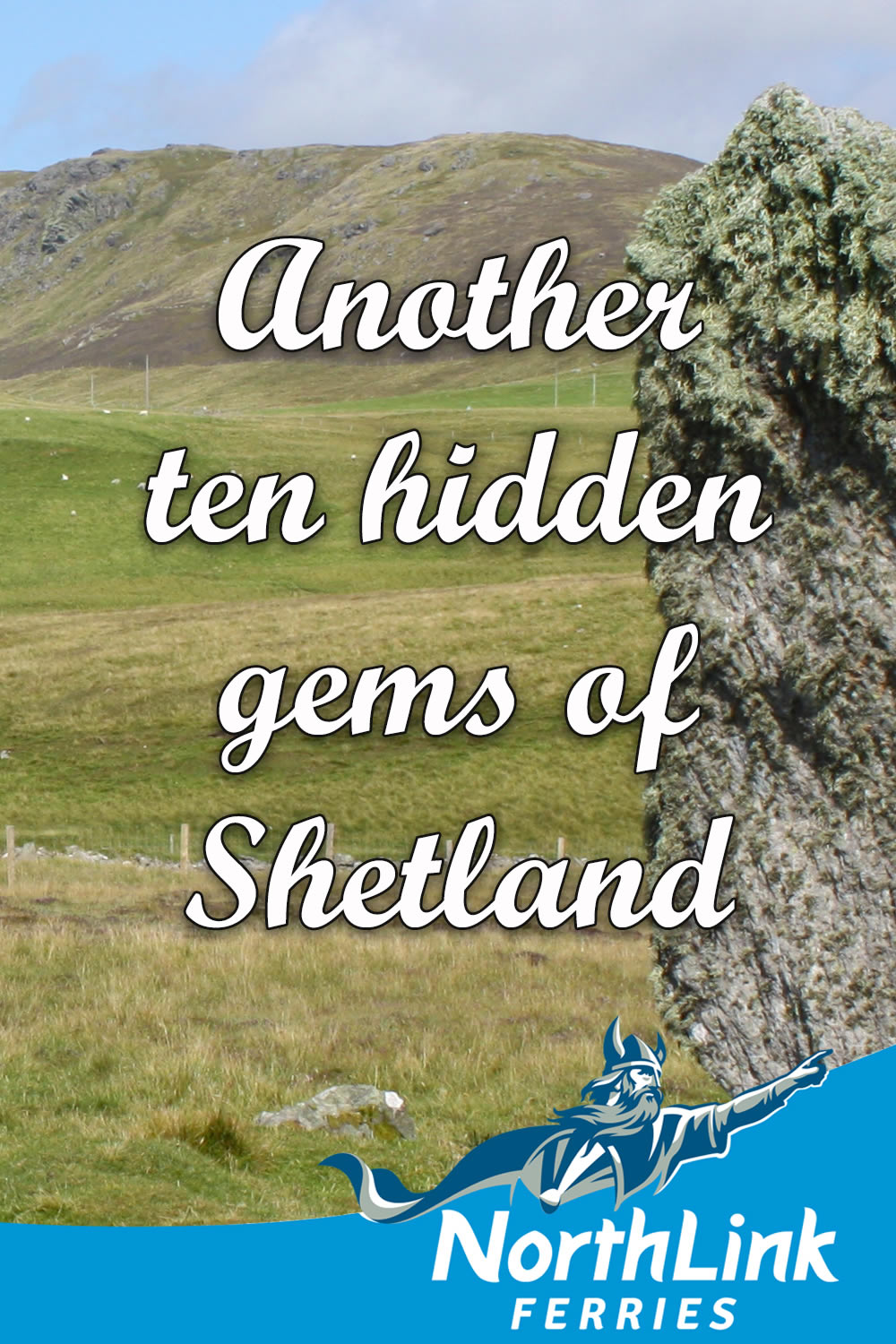Another ten hidden gems of Shetland
Due to the popularity of our other ’10 gems’ blogs, we’ve compiled another list of Shetland’s best lesser-known sites that you should visit.
Set within an otherwise gentle landscape, the broch demands respect and is flanked by sheer cliffs to seaward, and the houses of Levenwick strung out along the lower reaches of the steep, imposing slopes above.
We love these spots and are sure you will, too.
See also:
- Ten hidden gems of Shetland
- Ten more hidden gems of Shetland
- Ten extra hidden gems of Shetland
- Ten further hidden gems of Shetland
- Ten additional hidden gems in Shetland
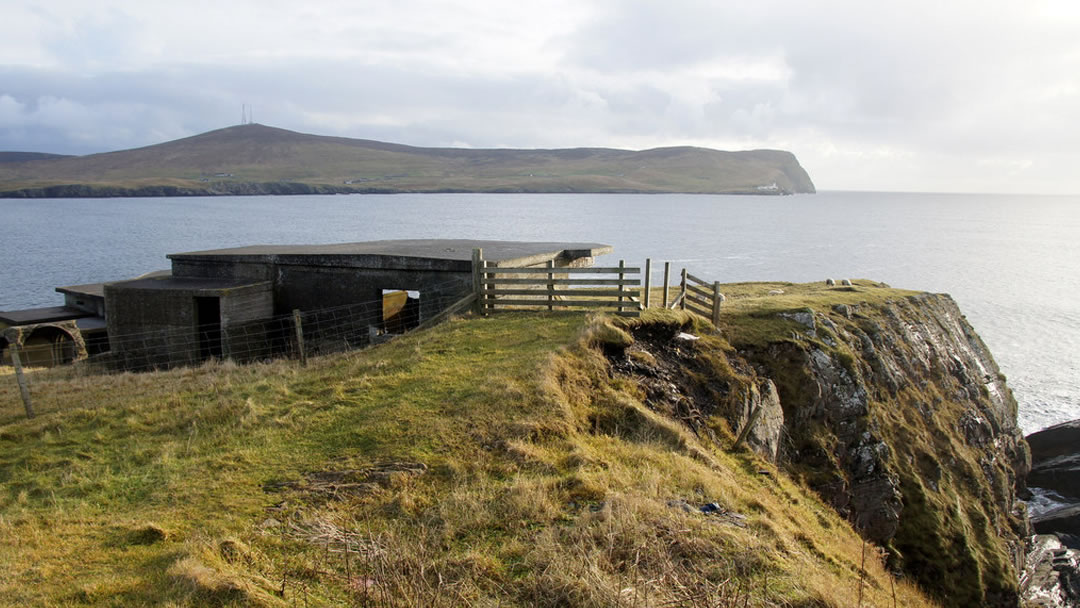
1. Ness of Sound, Lerwick
Ness of Sound, just a stone’s throw from Lerwick, has a fascinating wartime history dating back to the Second World War. During the war, Shetland was strategically important, and there was a real fear that the Nazis would take Britain from the north following the annexation of Norway in April 1940. Shetland was well-placed to patrol the North Sea and North Atlantic area, so there was a significant military presence throughout the war, and Lerwick was heavily fortified. The Ness of Sound, a short coastal walk best done from Fjara Cafe Bar, was a substantial wartime battery where, today, remains of the gun emplacements, engine room, observation posts, and other buildings can still be seen – as well as some eye-catching graffiti! This is also an excellent place to track and spot the elusive Eurasian otter.
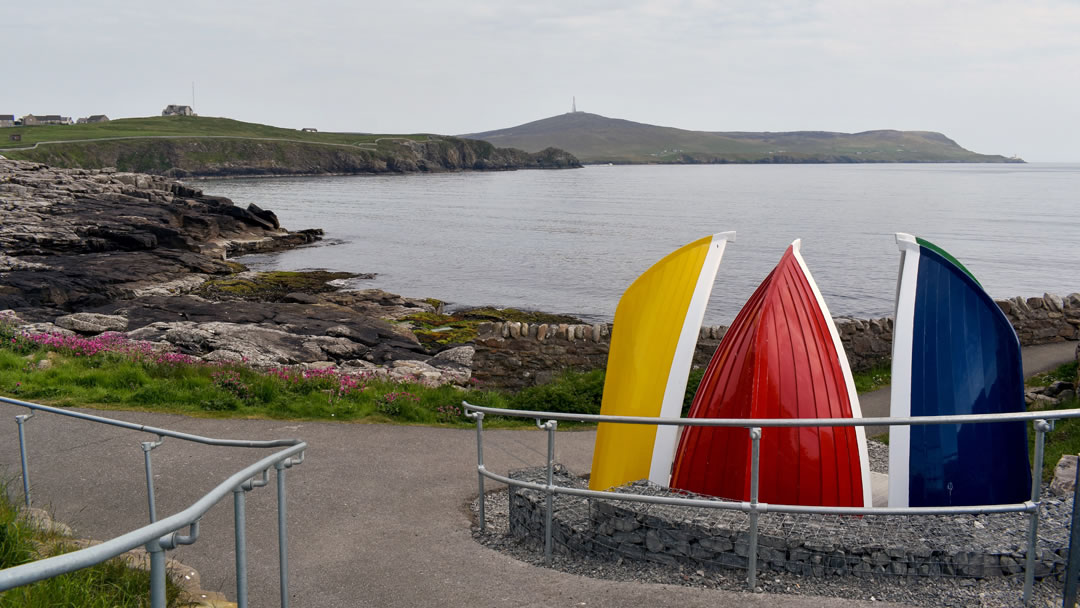
2. Sletts walk, Lerwick
Remaining in Lerwick, a walk around the Sletts area of Lerwick can be incorporated into a larger walk around the Ness of Sound and/or the Knab and out to the Sands of Sound beach. If you’re staying in Lerwick without a car, this is a beautiful walk to catch the morning sun or for a post-dinner stroll. A path leads from Sletts Road towards Tesco, where another gate leads onto the path from the South Road, close to the roundabout. This quarter-mile path gives fantastic views over Breiwick and the approach to Lerwick Harbour and the island of Bressay.
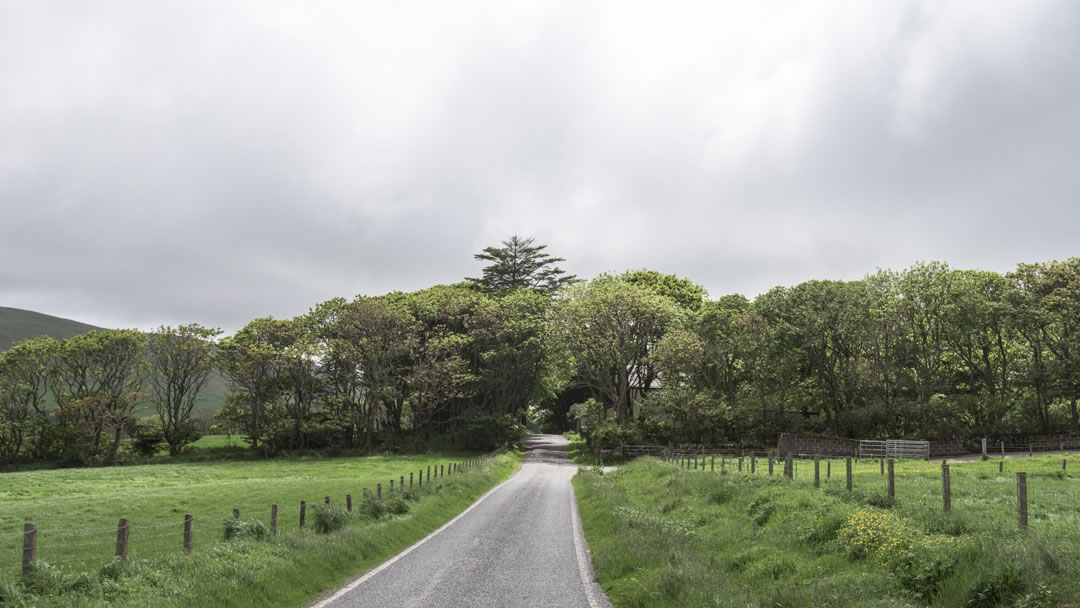
3. Kergord Woods, Weisdale
Shetland is not known for its trees; however, there are a few small plantations, including the Kergord Woods, tucked into the hillside of the beautiful Weisdale Valley. The woodland, Lindsay Lees, was planted here in the early 20th century and is the largest and oldest plantation in Shetland – boasting some of the islands’ tallest trees. Made up of mixed woodland, including spruce, larch, fir and sycamore, the forest has about nine acres, and visitors can explore them at leisure. Within the trees, visit the upper section of woodland and discover the ruined Lindsay Lee cottage that now stands as a roofless ruin.
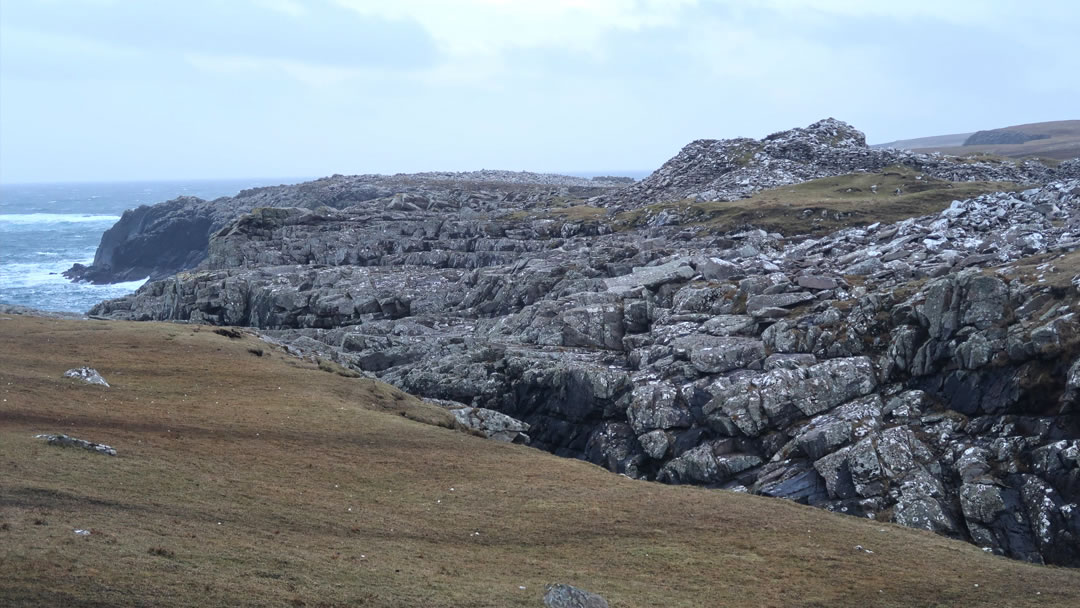
4. Levenwick Broch, South Mainland
Most people have heard of or visited the big-hitting brochs of Mousa, Clickimin and Old Scatness, but Levenwick Broch, a two-mile walk along the impressive coastal cliffs, is one of the best brochs in Shetland which most people have never been to visit. For this broch, park responsibly before the farm track at the end of Willal Road (before Levenwick Beach). The spectacular ruins of Levenwick Broch, one of around 120 known broch sites in Shetland, is precariously perched on the edge of the cliffs, commanding views eastwards across the North Sea, south towards Sumburgh Head and North towards Sandwick and Mousa. Set within an otherwise gentle landscape, the broch demands respect and is flanked by sheer cliffs to seaward, and the houses of Levenwick strung out along the lower reaches of the steep, imposing slopes above. This one is well worth the effort!
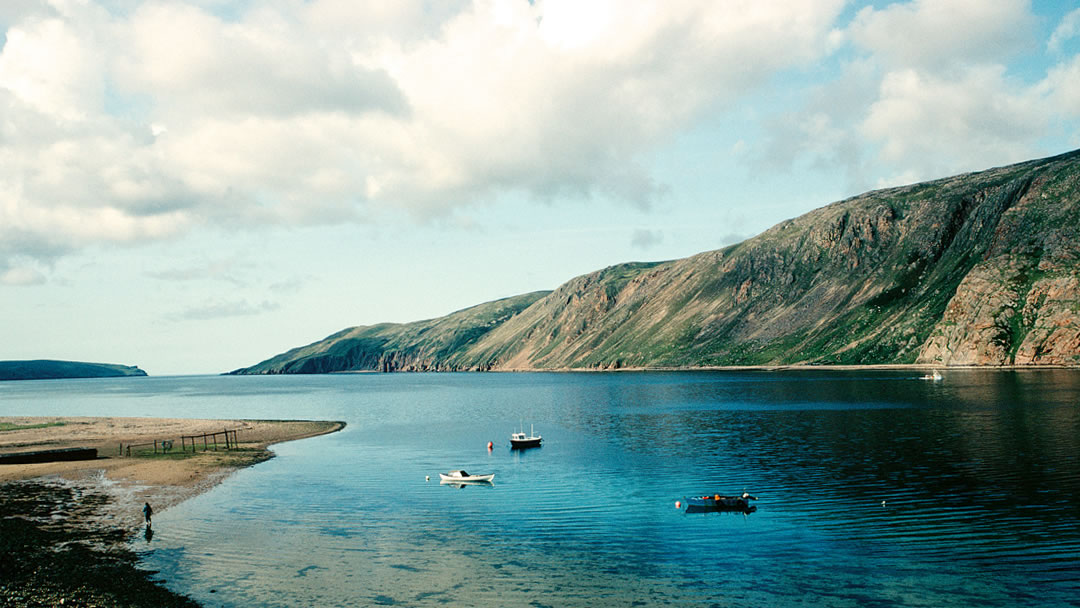
5. Heylor, Northmavine
Heading north, with spectacular views of Ronas Hill, Shetland’s highest hill, Heylor is set on the beautiful shores of Ronas Voe. Follow the road signs from Urafirth to Heylor. Heylor sits on the water’s edge and is dominated by the ‘Blade’, a gravel spit which has swallowed up the former pier. This former fishing station has remnants of the old buildings and the original pier that the shifting beach has almost swallowed up. Please be aware that terns nest on the beach during summer and shouldn’t be disturbed.
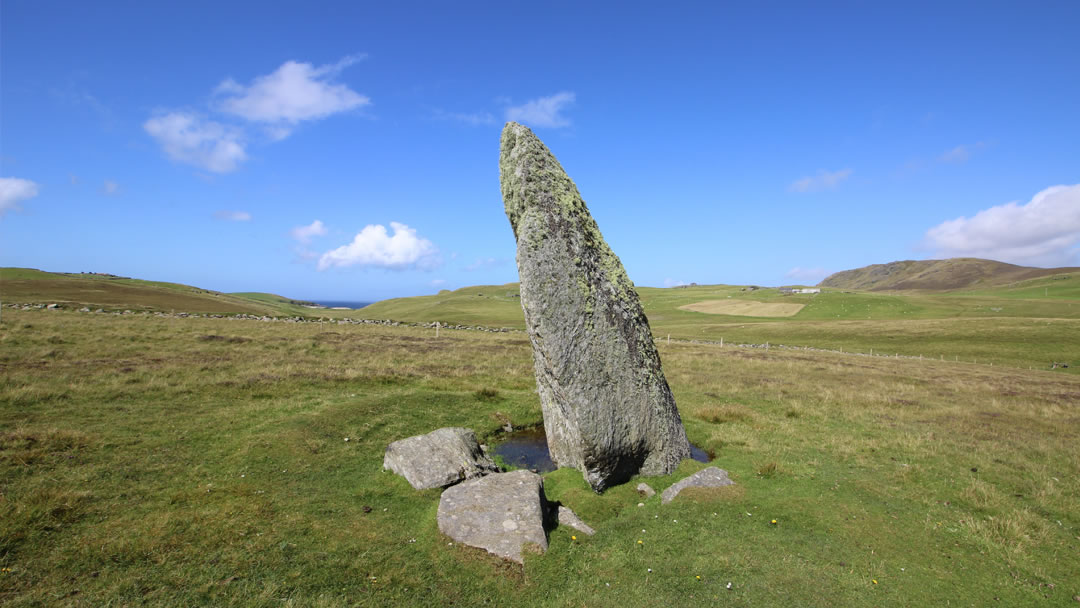
6. Lund standing stone, Unst
Shetland’s largest standing stone is found on the road to Lund; you can’t miss this giant 12-foot standing stone dating to the Neolithic or Bronze Age and dominating the gentle landscape surrounding it. Shetland is not known for its great stone circles, as found in Orkney, but numerous impressive monoliths (single standing stones) are dotted around the landscape. Continuing to the end of the road, check out the Lund Kirk and beach. The ruined St Olaf’s church and graveyard are an interesting place to view some Viking graves dating from the 9th to 11th centuries. Within the graveyard is the final resting place of a Hanseatic merchant, Segebad Detken, found in the churchyard in 1573. This is also an excellent place to look for seals and walk along the beautiful sandy beach.
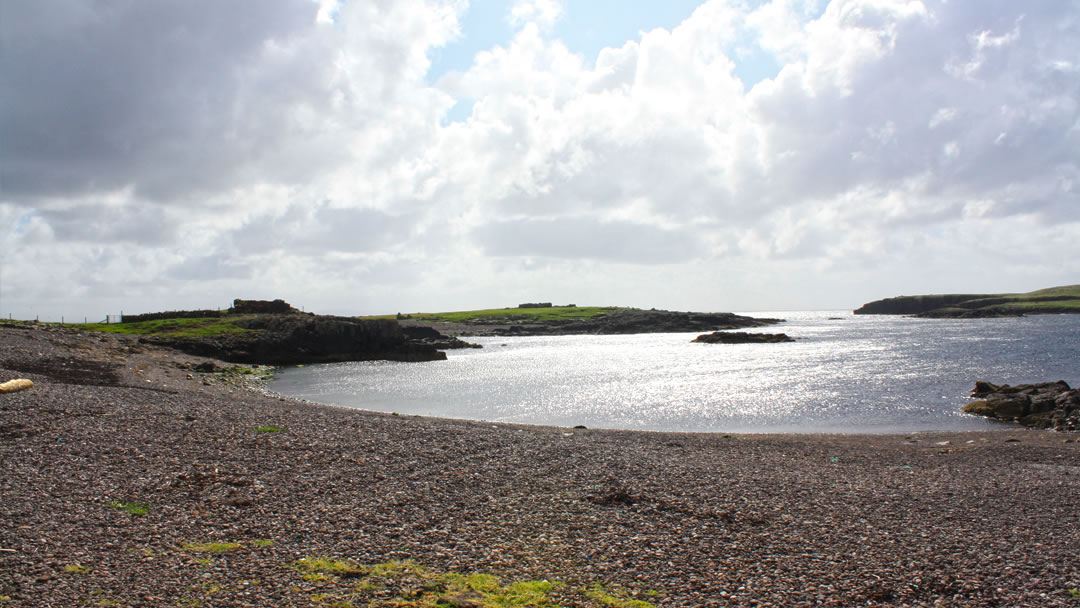
7. Stenness, Northmavine
Search for agates at Stenness beach, where, hidden on the beach in this sheltered bay, these tiny red, semi-precious gemstones were formed by volcanic activity almost 400 million years ago when Shetland lay close to the equator. Stenness was also an important fishing station in the 19th century, and the remains of these buildings can still be seen. Fish were split, dried and cured on the beaches before being sent to European markets in the days before modern refrigeration and transportation.
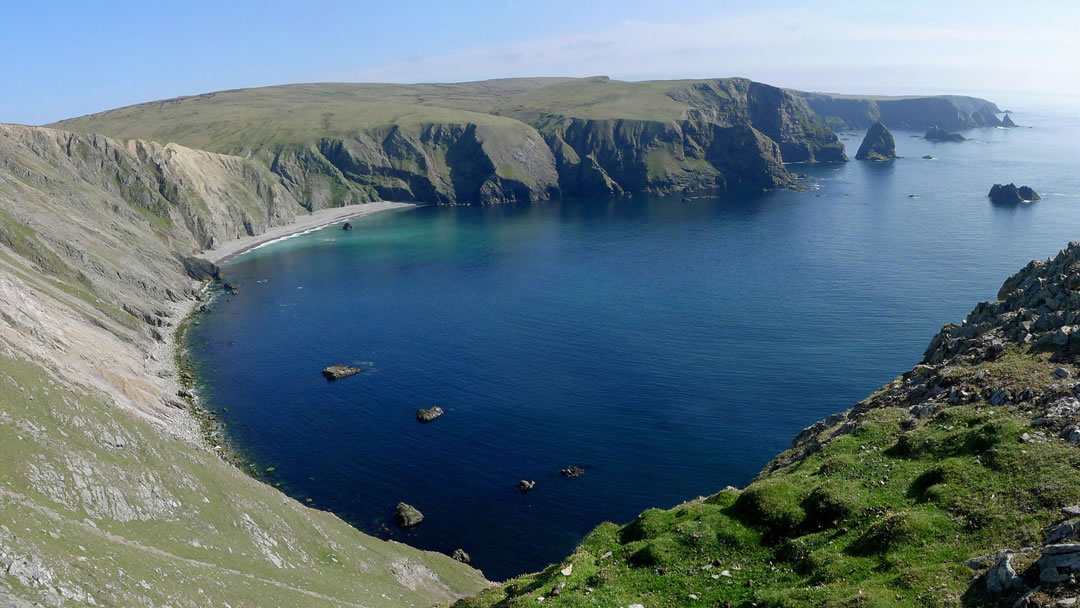
8. Deepdale, West Mainland
A favourite summer walk to catch a sunset is Deepdale, which sits halfway between Sandness and the Dale of Walls. You can walk in from either the Huxter mills or the Voe of Dale beach (Dale o’ Waas beach). Foula, Shetland’s most westerly island, looks impressive on the Atlantic horizon from almost every point of this walk. Deepdale is imposing and sheer, with steep cliffs that fall into the sea towards the gravelly beach below. Extreme care must be taken if attempting to go down to the beach. It is possible, but not for the faint of heart or those suffering vertigo! Regardless of whether you try to get down to the beach, this is one of the best places in Shetland to catch a summer sunset.
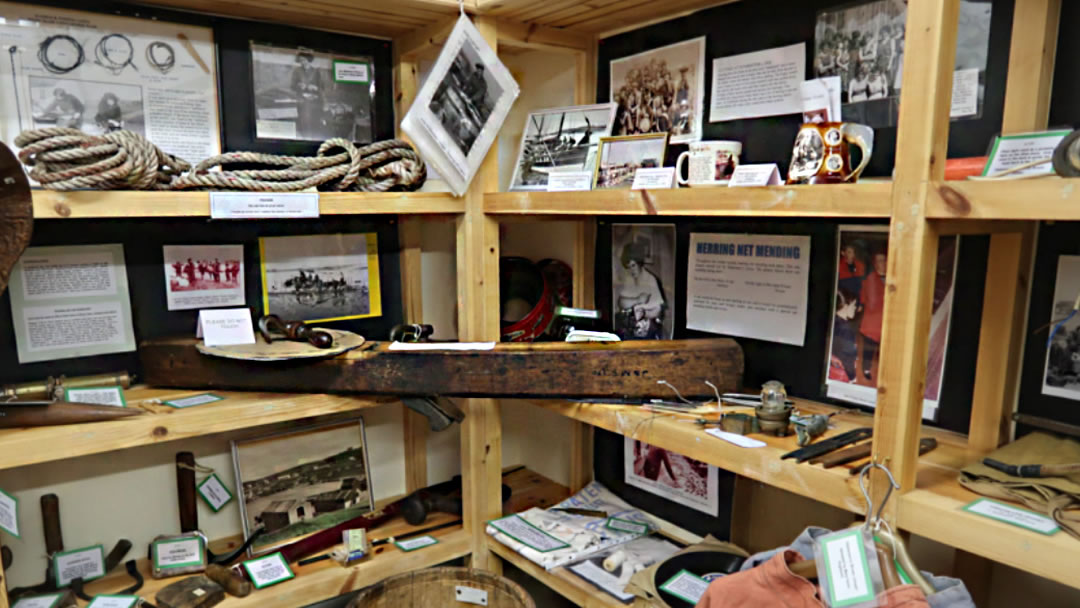
9. Whalsay Heritage Centre
On the island of Whalsay, the Heritage Centre is a must-see. Tucked away in the old stable and farm buildings behind the impressive Georgian manor house that now houses the island’s secondary school, this museum tells the story of an island. Whalsay is a tight-knit community of around 1,000 – a number that has remained unchanged over the years as the island enjoys relative prosperity brought in by the nets of the local fishing fleet, comprising eight pelagic boats and a handful of whitefish and other inshore vessels. The volunteer-led organisation hosts a summer exhibition each year covering a different aspect of island life.
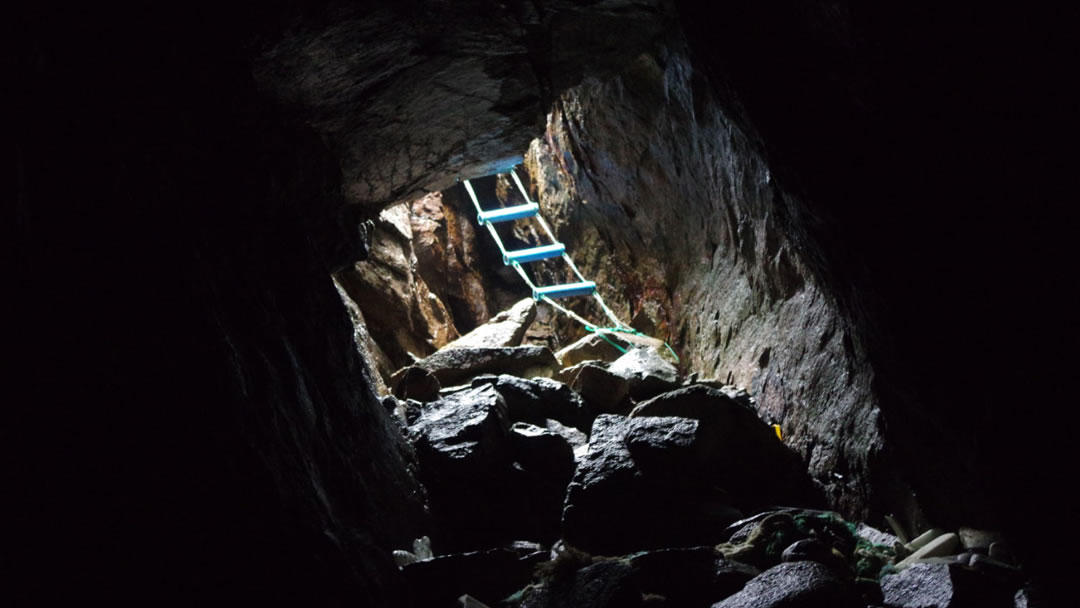
10. Smugglers’ Cave, Burra
Who doesn’t love a good smuggling tale? Shetland has them aplenty, and one of the best places to visit is the Smugglers’ Cave in Hamnavoe, Burra. For this walk, park at the Hamnavoe Marina and follow the coast beyond the marina and Backaburn beach. Follow the rough grass path west from Backaburn (overlooking the marina). This path snakes its way around to the lighthouse. A rope ladder assists the eight-foot drop into the cave. Like many of Shetland’s caves, it was formed by the sea, taking advantage of a flaw in the rock face. Geologically speaking, the weakness lies along a natural fault in the rock. Following millions of years of storm-driven erosion, a long, narrow cavern has been carved out and created deep inside the rock. The cave can be tricky to find, but it is certainly worth the hunt!
 By Laurie Goodlad
By Laurie GoodladBorn and raised in Shetland, Laurie loves the unique history and culture there so much that she started her own tour company offering visitors the chance to see the isles through the eyes of an islander. Find out more at www.shetlandwithlaurie.com
Pin it!